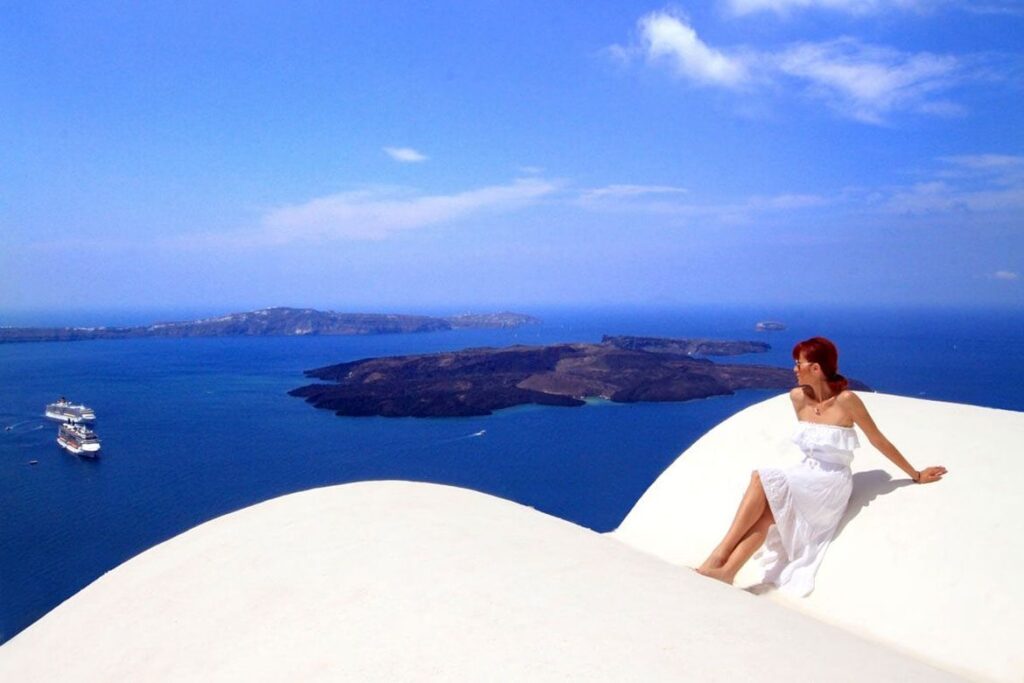Emerge yourself in the rich history of Imerovigli, let yourself wandering around the cave houses, and take photos of traditional architectural masterpieces!
Imerovigli is the next village after Fira and Firostefani, on the famous caldera, on the road to Oia. The name is formed from the words vigla and the Latin word vigilare which means to Act as a Look-Out, and imera which means day, in Greek.
The village is located at the highest and most central part of the Caldera, making it a strategic spot from the ancient times due to its visual command of the entire area and its proximity to Skaros Fortress.
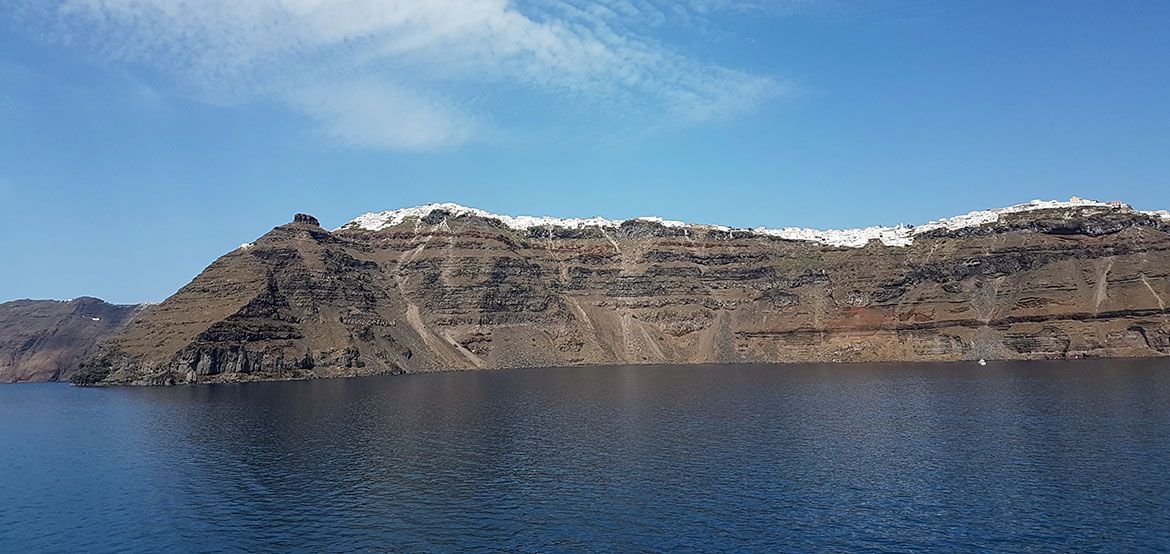
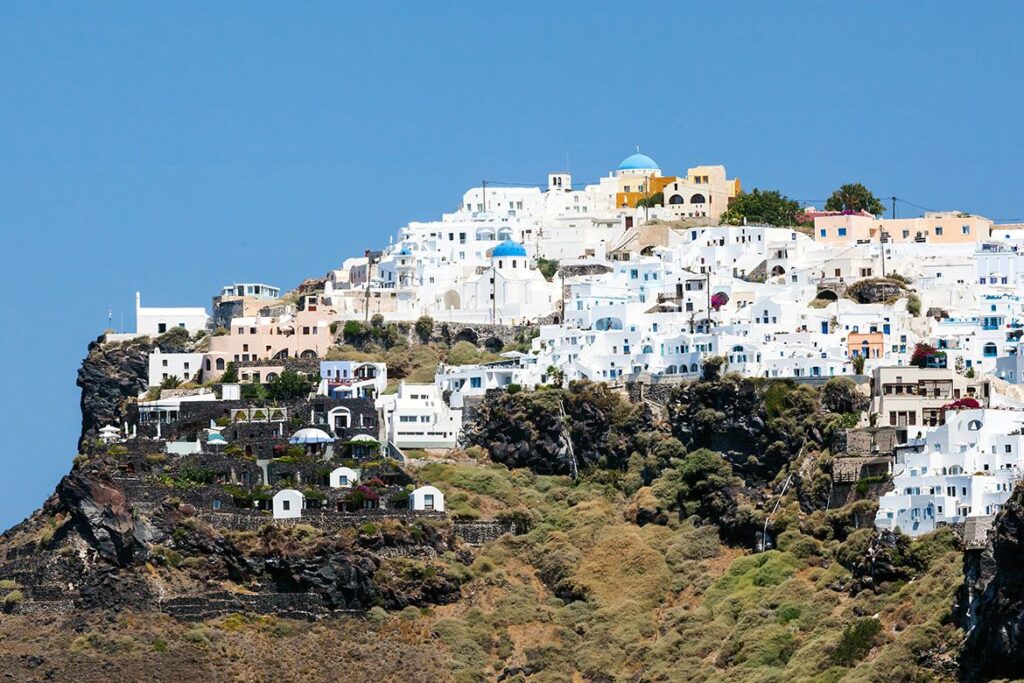
Today, Imerovigli has been declared a Traditional Settlement and combines breathtaking views of the volcano, enchanting sunsets, and tranquility. There is the main square, where the road leads up to the Caldera and the traditional hillside cave houses. The volcano eruption in 1956 destroyed the largest part of Imerovigli, and some of the population perished, while others moved away to the mainland.
Imerovigli has since then been restored and is home to some of the most beautiful hotels and traditional cave houses on the island.
Skaros Rock and the history of the first capital of Santorini!
Skaros Rock was inhabited in medieval times, due to the fortress. The original castle, known as ‘Epano Kastro’ (means upper castle in Greek) or ‘La Roka’, built in the later Byzantine years, offered protection from the pirates.
The settlement, which was built around and below Epano Kastro, was named ‘Kasteli’ of Skaros and at the top of the rock a large bell was hung, to warn inhabitants of the possible arrival of pirates.
Skaros was the capital of Santorini until the 18th century! The capital had been transferred to Fira, when the rich Roman Catholics who had once lived in Skaros, moved to the town of Fira, looking for a flatter level with access to the sea.
Today, Skaros Rock is totally uninhabited, but visitors can enjoy the spectacular view from the small church, the Chapel of Agios Ioannis Apokefalisthis, on its north side and take snapshots of the island’s old history.
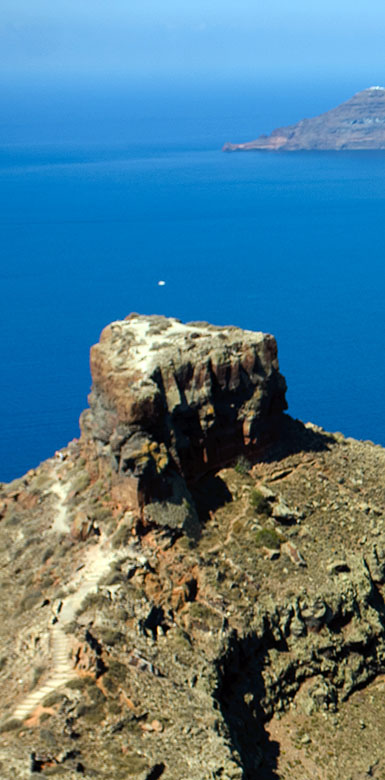
Old cave houses are today’s masterpieces!
The architecture of the Santorinian houses is the actual history of the island. The underground buildings, which were used as homes, churches, and warehouses, are part of the tradition, marking the unique beauty of Santorini.
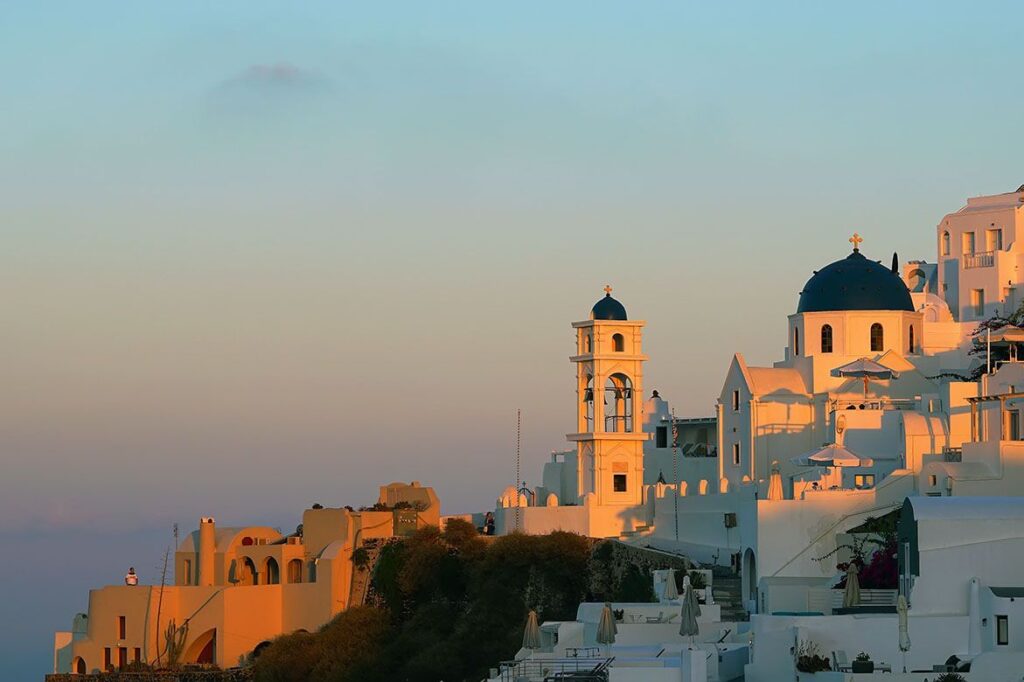
The population of the old Santorini was mostly occupied as sailors and members of a ship’s crew. They could not afford to build their houses on top of the hill, where the rich people used to. However, the uniqueness of the volcanic terrain allowed them to carve their buildings into the earth, which was a much cheaper alternative.
The cave houses were small without foundations, with a vaulted ceiling and a narrow facade. The Theraic soil, mixed with limestone, which the locals found at Profitis Elias mountain, formed a sturdy plaster that solidified with humidity, becoming an even harder material when dry. The final material also included pumice, a froth-like igneous rock, and a bad conductor of heat and sound. For that reason, the cave houses are kept warm in the winter and cool in the summer, with high resistance to earthquakes.
There were two separate rooms inside the cave houses, one behind the other, where the front room was used as the reception area for the visitors, and the backroom was the bedroom of the residents. There was a kitchen and a storage room, but the cooking place was outside to avoid the smoke disturbance. The toilet was constructed outside the house as a cave room too.
Today, these cave houses have turned into traditional yet modernized suites and villas, reminding us of the valuable connection between the present and the past. Wander around the old residencies, and capture the fragrances from their courtyards, where there are still flowerbeds made of mint, basil, jasmine, convolvulus, and marjoram. Take some photos of the colorful doors and windows in pink, blue or green and enjoy their stunning view at the Caldera bay.
